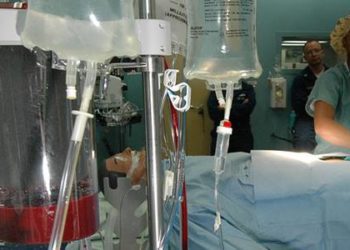Perioperative statin use may reduce complications and mortality in non-cardiac surgery
1. In this propensity-matched retrospective cohort study, perioperative statin use was associated with reduced risk of 30-day mortality and risk of postoperative complications.
2. Sub-analyses indicated that patients with pre-existing ischemic heart disease, diabetes, age <75 years old, high risk surgery and use of high-intensity statin therapy may have the greatest benefit.
Evidence Rating Level: 2 (Good)
Study Rundown: Statins are one of the most frequently prescribed drugs in America because of their role in reducing cardiovascular events. Their use in reducing perioperative risk of complications or mortality, however, is unclear. This retrospective cohort study aimed to evaluate the association of early statin exposure on 30-day mortality and complications after non-cardiac surgery.
In this predominantly male, propensity-matched cohort, exposure to a statin on the day before or the day of non-cardiac surgery was associated with a reduction in 30-day all-cause mortality, with a corresponding number needed to treat of 244. There was also a reduction in risk of any post-operative complications, with a number needed to treat of 67. The greatest risk reduction was seen with cardiac complications. Strengths of the study included the large size of the cohort and the propensity-match design. Limitations included the predominance of males in the studied cohort, and reliance on medical records. Also, the effects of the type of statin and duration of treatment prior to surgery date were not studied.
Click to read the study, published today in JAMA Internal Medicine
Relevant Reading: Preoperative statin therapy for patients undergoing cardiac surgery
In-Depth [retrospective cohort study]: This retrospective cohort was derived from the Veterans Affairs Surgical Quality Improvement Program database and discharge and treatment coding from the Veterans Health Administration patient treatment files from 2005 to 2010. These treatment files also included data on medications used. Patients included were those undergoing elective or emergent non-cardiac surgery (vascular, general, neurosurgery, orthopedic, thoracic, urologic, otolaryngologic). The exposure of interest was statin use on the day of or day after surgery and the primary outcome of interest was all-cause 30-day mortality and secondary outcomes included cardiovascular and non-cardiovascular complications. Statistical analysis included propensity score matching (1:1) to match patients with statin exposure and no exposure as well as the McNemar test and calculated relative risk ratios to compare risk of the primary and secondary outcomes between groups.
The propensity-score matched cohort included 96 486 eligible patients, 96.3% of whom were men. At the time of admission to hospital, 37.8% of patients already had an active prescription for statin. Perioperatively, 31.5% of the cohort had exposure to a statin on the day of or day after surgery. Among the 48 243 propensity-score matched pairs, 30-day all cause mortality was significantly reduced in statin exposed patients (RR 0.82; 95% CI 0.75-0.89; p < 0.001). The number needed to treat was 244 (95% CI 170-432). There was also a significant reduction in risk of any perioperative complication (RR 0.82; 95% CI 0.79-0.86; p < 0.001). The number needed to treat was 67 (95% CI 55-87). Greatest risk reduction was seen for cardiac complications (RR 0.73; 95% CI 0.64-0.83). Sub-analyses indicate that patients with pre-existing ischemic heart disease, diabetes, those <75 years old, those undergoing high risk surgery and those on intensive high dose statin therapy may have greatest risk reduction with perioperative statin treatment.
Image: PD
©2016 2 Minute Medicine, Inc. All rights reserved. No works may be reproduced without expressed written consent from 2 Minute Medicine, Inc. Inquire about licensing here. No article should be construed as medical advice and is not intended as such by the authors or by 2 Minute Medicine, Inc.







